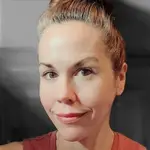From beer to dishwashers to Kevlar, these women's inventions have changed the way the world works.
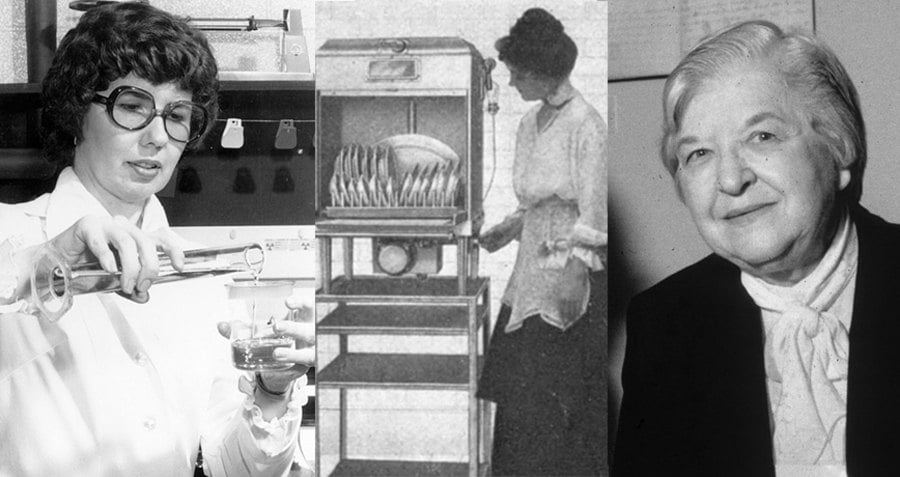
Wikimedia Commons
Imagine this: Researchers at a prominent academic institution conduct a study and find that all else being equal, scientists are more likely to prefer a male candidate for a science faculty position than a female candidate.
If that sounds like the distant past to you, think again — Yale University researchers conducted the study in 2012. Add to that the fact that women earn only 20 percent of science, technology, engineering or math (STEM) degrees, and you’ve got a pretty decent picture of what it’s like to be a woman in the STEM fields these days.
Now, imagine what women in those fields may have experienced some decades — even centuries — before the Yale study.
Still, despite the barriers and risks of intellectual theft from male peers, some female inventors saw their work through to the end — and received proper credit for it. With that in mind, here are eight groundbreaking devices, ideas, and disciplines created by tragically overlooked women inventors.
Mark I Computer
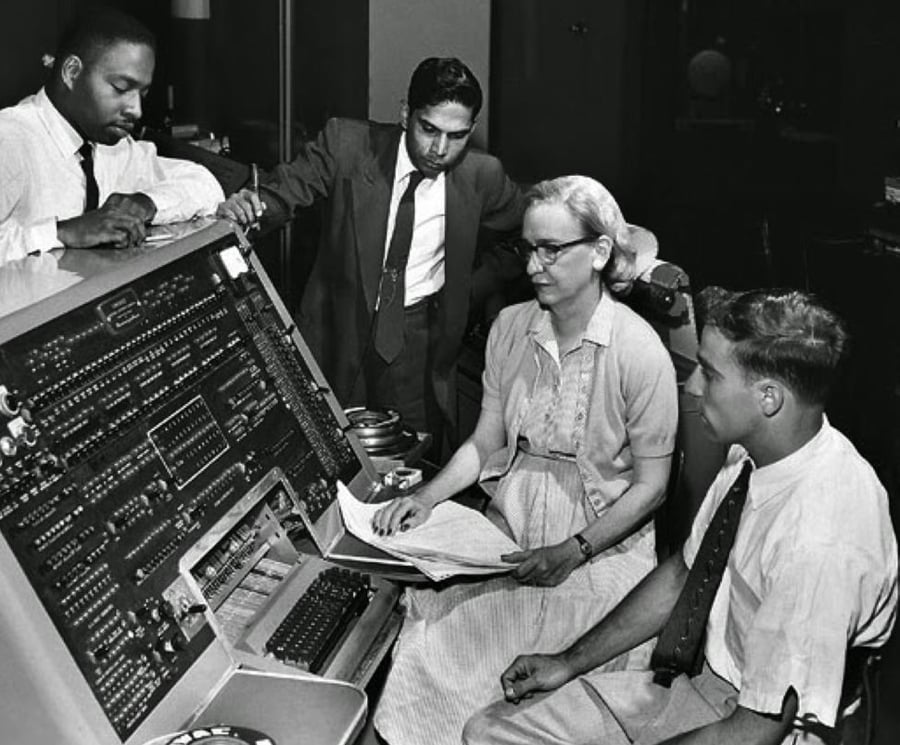
Wikimedia CommonsGrace Hopper at the UNIVAC keyboard in 1960.
World War II meant many different things to many different people, but for Vassar College mathematics professor Grace Hopper, the war spelled opportunity. Itching for some excitement in her life, Hopper left her job and husband and enlisted in the U.S. Navy. At 38 years old, Hopper added “Lieutenant” to her name and went to work.
For Hopper, this meant heading to Harvard University, where she would be charged with maintaining the Harvard Mark I computer, a five-ton room-sized machine meant to study the effects of atomic bomb implosion.
Working on the project, Hopper invented a program that translated written language into code. The process came with its own hiccups — indeed, Hopper coined the terms “bug” and “debugging” when she had to remove actual moths from the Mark I computer — but ultimately Hopper and her team succeeded.
Mark I could perform four arithmetic operations and had built-in programs for processing logarithms and trigonometric functions, which offered a vital service to Naval efforts during the war. Of Hopper’s work, Mark I computer designer Howard Aiken later said, “Grace was a good man.”
Beer
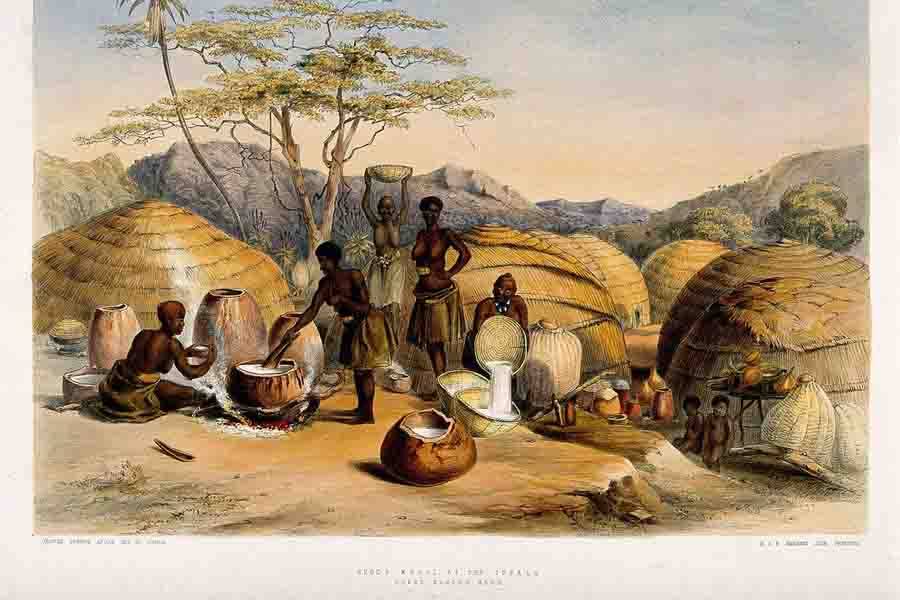
Wikimedia CommonsNative South African women brewing beer by their huts. Colored lithograph by George-French Angas.
If you’ve ever enjoyed a beer, you’ve probably got some women inventors to thank.
Testing on ancient pottery jars suggests that beer was brewed as far back as 7,000 years ago in what is now Iran. But while archaeologists who study fermentation differ on exactly when beer made its debut, they agree on this: most ancient brewers were women.
“While men were out hunting, women were out gathering the ingredients they needed to make other foods and drink to go with the wooly mammoth or mastodon,” Dr. Patrick McGovern, University of Pennsylvania bimolecular archeologist, told Craft Beer and Brewing Magazine.
Women in ancient Mesopotamia were the preferred brewers and tavern owners — in part because they were believed to be priestesses to the goddess of beer, Ninkasi. In fact, the first written recipe for beer — scribed on a clay tablet — was a Sumerian poem titled “The Hymn of Ninkasi.”
Kevlar
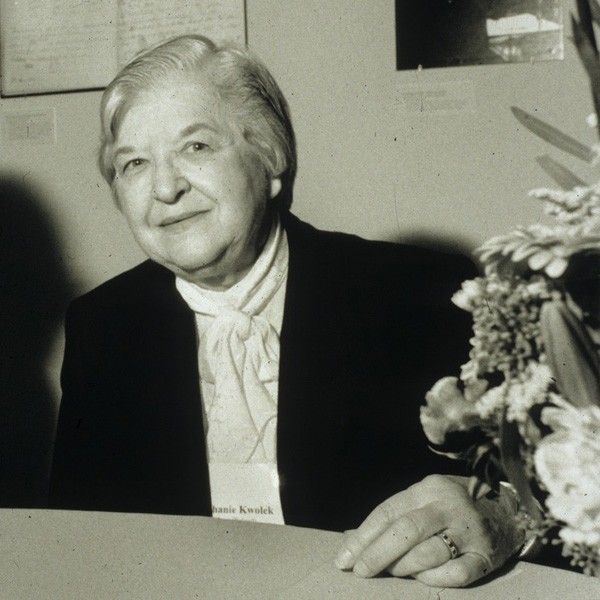
Wikimedia CommonsStephanie Kwolek.
Accidents have produced many things, both good and bad. One item on the decidedly good list is Kevlar, brought to us by a chemist and researcher named Stephanie Kwolek.
Working at the Wilmington, Delaware DuPont plant in 1964, Kwolek focused on producing a lightweight polymer for tire production. In the lab, Kwolek had succeeded only in making a thin, semi-opaque solution destined for the trash.
Still, Kwolek implored her colleague to put it through spinneret testing, whereupon they realized that the fibers were five times stronger than steel by weight. Kwolek’s discovery started a whole new field of polymer chemistry.
Kwolek then learned that heat-treating the fibers made them even stronger, and by 1971, her material, Kevlar, resembled what it is today. Its uses now include acting as the chief ingredient in bullet-proof vests, armored cars, and bomb-proof materials.
Scotchgard
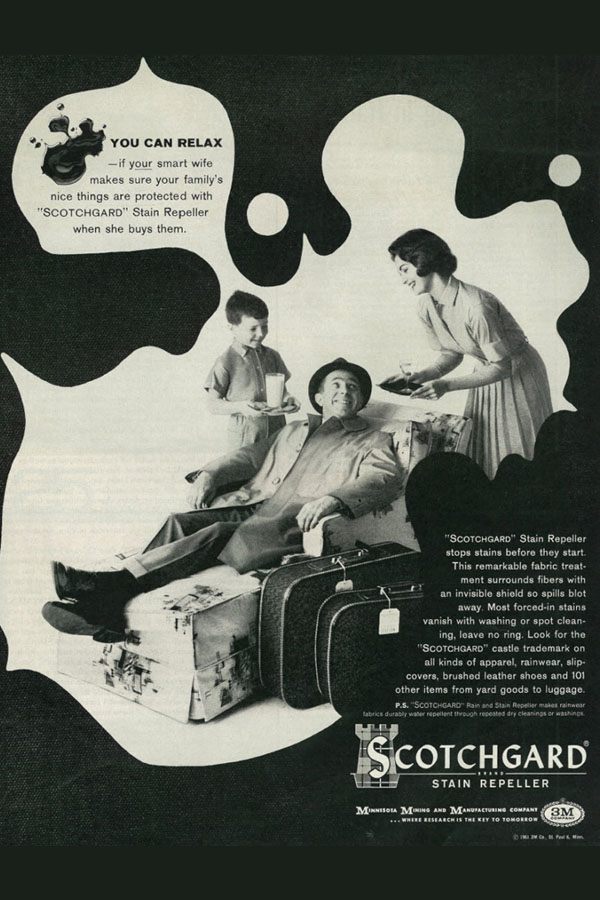
Flickr/Classic FilmA vintage ad for Scotchgard.
In 1947, high school student Patsy Sherman took an aptitude test. The results suggested she should devote her future to becoming a housewife.
In response, Sherman demanded to take the boys’ version of the test (at the time, male and female students took different tests). When she took the test for male students, her test results said that she should be a scientist.
Sherman seemed to take that recommendation to heart. After graduating from Gustavus Adolphus College in 1952 with a degree in chemistry, Sherman went to work for the 3M Company. There, Sherman worked on an experiment to find a new material for jet fuel lines.
A fluorochemical spill on co-worker Samuel Smith’s shoe proved so difficult to remove that it shifted the entire experiment: Sherman and Smith re-focused and used the spill as a protectant against other spills. They patented this compound, named Scotchgard, in 1971 and it is now the most widely used stain repellent in America.
Women Inventors: Chocolate Chip Cookies

Wikimedia Commons
One day circa 1938, Ruth Wakefield ran out of baker’s chocolate when making fudge cookies. She replaced the bitter chocolate with chunks from a semi-sweet Nestle bar. Wakefield thought the chunks would melt into the cookies when baked. They didn’t.
Undeterred, she served her newly invented chocolate chip cookies to guests at the lodge she owned in Whitman, Massachusetts: the Toll House Inn. They were a hit.
Wakefield named her creation “Toll House Chocolate Crunch Cookies,” and they became so popular that a Boston newspaper published the recipe. Nestle bar sales increased and as a thank you, Nestle printed Wakefield’s recipe on their package — and offered Wakefield a lifetime supply of Nestle’s chocolate.
Liquid Paper
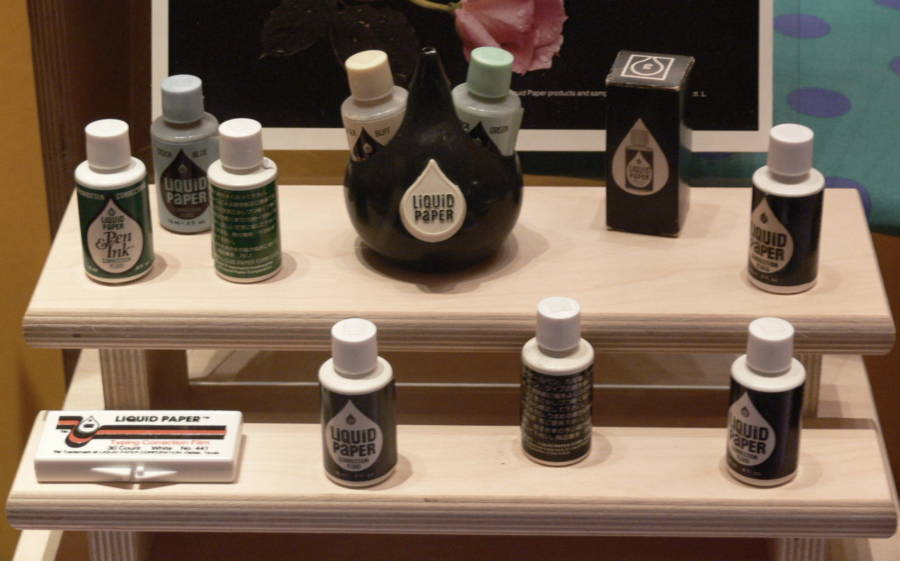
Wikimedia Commons
Bette Nesmith Graham would eventually be the mother of an American pop star, the Monkees’ Michael Nesmith, but she was also an inventor. While in the workforce, the Texas Bank and Trust executive secretary had to toil with early 1950s typewriters. Tired of the time it took to fix typos on an unforgiving device, Nesmith Graham forged a solution.
“With lettering,” she recalled, “an artist never corrects by erasing, but always paints over the error. So I decided to use what artists use. I put some tempera water-based paint in a bottle and took my watercolor brush to the office.”
Nesmith-Graham consulted with her son’s chemistry teacher to tweak the formula for optimal use. She then started her own company to produce her invention, Liquid Paper. Eventually, she sold it to Gillette for a cool $47.5 million.
Women Inventors: Autoradiographs
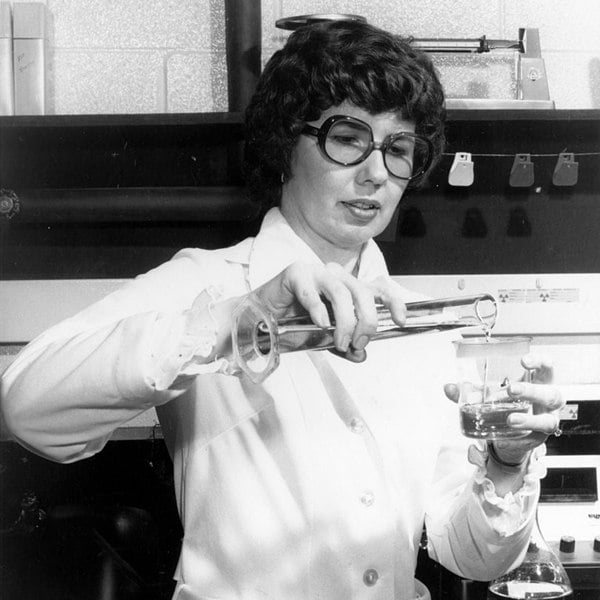
Wikimedia CommonsBarbara Askins.
Maybe you’ve never heard of an autoradiograph, but its technology has proven vital in two different fields. This technology, patented by NASA chemist Barbara Askins in 1978, uses radioactive materials to enhance photo negatives.
Assigned the task of improving astronomical photos, Askins used autoradiograph technology to take the invisible elements of photos taken in deep space and make them visible. This technology also made its way into the medical field, bringing clarity to underdeveloped x-rays. As a result, doctors could cut down on the amount of radiation they exposed their patients to when administering x-rays.
NASA used Askins’ technology extensively for its research and development work, and she won the National Inventor of the Year award in 1978. For someone who earned her science degrees after quitting her teaching job and having two children, that’s a pretty good career high.
The Dishwasher

Wikimedia CommonsJosephine Cochrane with her dish-washing machine.
Josephine Cochrane wasn’t much for second chances. After servants chipped the 19th century Illinois socialite’s heirloom china while hand-washing it, Cochrane resolved to invent a machine that would do this job for her servants — and do it better. Thus Cochrane designed what we now know as a dishwasher: A machine powered by water pressure, and containing a boiler, wheel, and wire rack.
Cochrane’s husband died in 1883, and left Cochrane with a large debt. In need of revenue, she vigorously marketed her invention to others, creating the final product after much trial and error. “I couldn’t get men to do the things I wanted in my way until they had tried and failed in their own,” she recalled. “And that was costly for me.”
Finally, a mechanic named George Butters constructed Cochran’s dishwasher to her specifications, and by 1886, the patent on the dishwasher made life a little easier for Cochrane’s servants. Her company, Garis-Cochran, held the patent (Garis was Cochrane’s maiden name).
The dishwasher’s initial cost was prohibitive for most housewives, and as a consequence, hotels were the machine’s earliest adopters. Then, in 1916, commercial foodservice business Hobart bought out the Garis-Cochran company, and formed its famous Kitchen-Aid division three years later.
By the 1950s, once Hobart had brought its Kitchen-Aid dishwasher to scale, Cochrane’s invention became a popular household appliance. In 2006, years after Cochrane’s death, the National Inventors Hall of Fame posthumously inducted Cochrane into its hallowed halls.
Beyond these women inventors, many other women in STEM haven’t received the credit they deserved. Get to know such women in this list of female scientists whose names you should know, but don’t. Then, learn the story of female scientist Hypatia of Alexandria.

